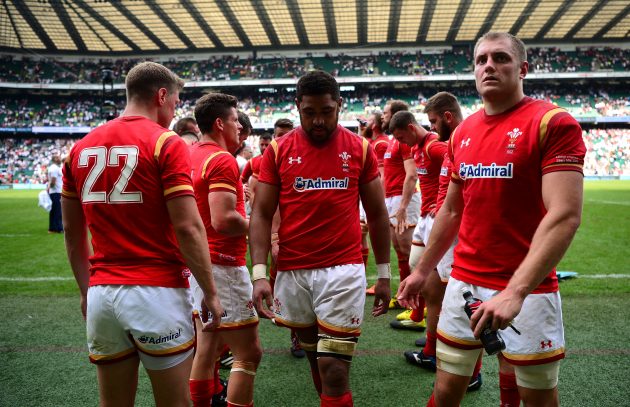Wales had a concerning outing against England, so where did it go awry? No genuine openside, a lack of creativity and a lack of backrow balance for starters...
Wales missed a legit openside
Be it Sam Warburton, Justin Tipuric, Ellis Jenkins or James Davies, the Welsh openside debate has become increasingly polarising. Nearly as polarising as whether you think Donald Trump is a blonde haired, melting ice-cream faced clown, or a massive blonde haired, melting ice-cream faced clown. However, on whichever side of the Welsh openside debate you fall, Saturday’s performance against England was hugely influenced by Wales not playing a specialist in that position. Wales were caught out on numerous occasions in the seven channel. In fact, after just 23 minutes Dan Lydiate had missed three tackles; a number he’d normally miss over 160 minutes.
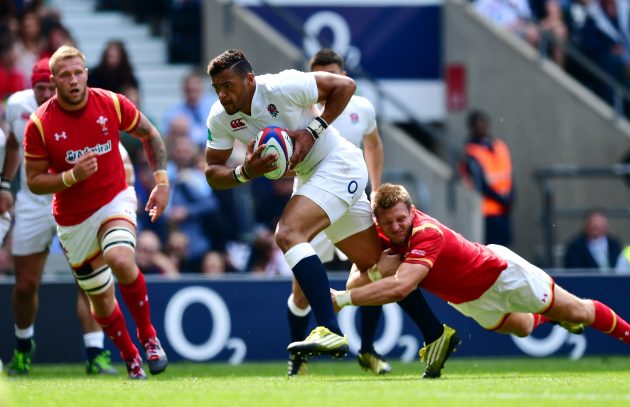
Donkey work: Dan Biggar was forced into one-on-one tackles with England’s big ball-carriers
The lack of a seven shutting down the ten yards on the openside, of first phase defence, meant that Dan Biggar was left making one-on-one tackles with players who are way over his kg limit. In those situations the seven would usually go low, with the lighter outside-half going high. The lack of defensive confidence in the seven channel also meant that Jamie Roberts was forced to defend more narrowly than he usually would, which resulted in him uncharacteristically missing some tackles on his outside shoulder. Wales will need a seven on the field and a seven on the bench against Sam Cane and Ardie Savea in New Zealand. Ellis Jenkins’ late addition to the squad, as a replacement for the injured Lydiate, may be the perfect opportunity to rectify the situation.
Wales need two distributors in the backline
Wales needing two distributors in the backline obviously isn’t a new observation, but the lack of it is becoming more obvious as the fixtures pass. Against England, as with virtually all Wales’ performances over the past 18 months, the over reliance on a straight, hard carry in the twelve channel is no longer enough to create space outside. On Sunday, the Welsh backline once again resorted to first phases dominated by a large carrier running ‘out to in’ – the idea being to hold the defence narrow and tight.
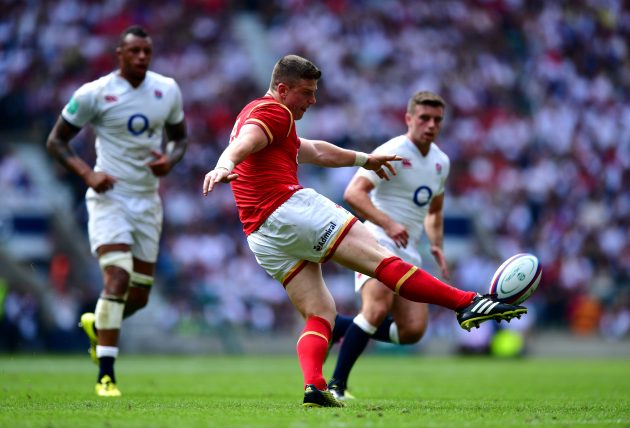
Distributor: Scott Williams’ return to the backline is welcome
And whilst this tactic is effective, it can’t be the only option that Wales have. England, as do all the All Blacks, the leading Super Rugby teams, Connacht, Exeter and Wasps, utilise a second distributor who can run behind a screen of dummy runners, take a short deep pass from the first receiver, and then use their 13, 15 and wing to move around the defence. With Scott Williams back in the Welsh squad it is an option open to Wales, even when he plays thirteen. It is however something that Wales rarely utilise.
Hallam Amos nails the 14 shirt
Rhys Webb, Jake Ball, Ross Moriarty and Rob Evans all had good individual performances, despite a substandard team performance, but it was Hallam Amos’ cap that will have been most reassuring for Wales. As with many Welsh wings in the current setup, Amos in his recent Welsh run outs has received little ball – on occasions Oliver Twist had more luck asking to be ‘fed’ than the Welsh back three.
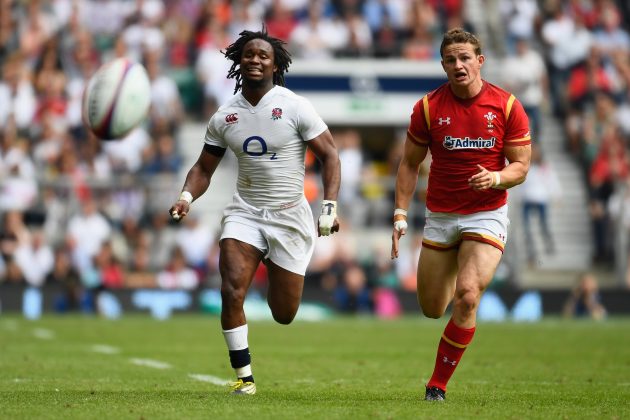
Holding his own: Hallam Amos’ running was one of Wales’ bright spots
But against England, Amos made the most of opportunities – he was joint top for clean breaks for both teams and top for defenders beaten. Even amongst the fine performances from Marland Yarde, Jonathan Joseph and Anthony Watson, Hallam Amos held his own. The genuinely impressive number however was his metres gained, 118, way ahead of any other player on either team – a number which included very few cheap kick return yards. Promising, very promising Hallam.
Wales don’t have to worry about locks.
As the England game showed, Wales have a few selection issues ahead of the tour to New Zealand, thankfully locks aren’t one of them. Both Jake Ball and Alun-Wyn Jones played well at Twickenham and particularly Ball. Both players ability to do the basics has never been in doubt, but to see them passing ‘one-out’ from the standard contact point was encouraging – it is something that Sam Whitelock and Brodie Retallick, the Kiwi locks, execute very well.

Assured: Both Jake Ball (pictured) and Alun Wyn Jones are decent handlers of the ball
In fact both AWJ and Ball passed the ball more than they carried; a rarity for a northern hemisphere lock. Ball’s performance also gives Wales further depth in a position where they already excel. There may be issues in midfield and the back row, but Wales’ strength at lock runs deep and is one of the least concerns ahead of the first test in NZ.
The new approach to the back row seems overly radical
The Welsh selectors approach to the back row for England, and the tour to New Zealand was/ is certainly radical. Wales, of all the tier one nations have always maintained a pure back row mix. A fetching seven, with a tackling six, combined with carrying eight. Dan Lydiate, Sam Warburton and Taulupe Faletau have been one of the most metronomic combinations in the last decade of rugby. Even when there have been calls for tweaks to the Welsh back row, playing two sevens for example, those calls were often dismissed. Until now, that is.
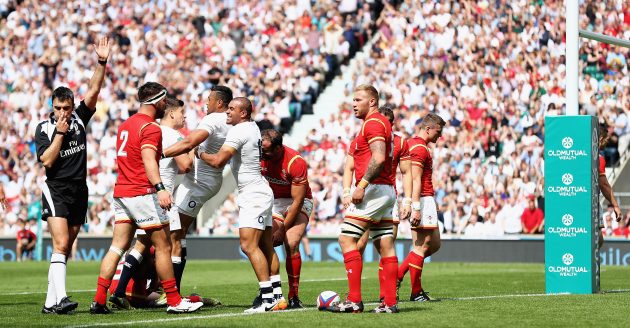
At sixes and sevens: The lack of a balanced backrow led to defensive gaps and England tries
Prior to the late inclusion of Ellis Jenkins, this current squad was made up almost entirely of utility back row players – even Sam Warburton has regularly played at six for Cardiff Blues this season. The adjustment of the Welsh back row to a host of 6.5’s isn’t itself a problem, as England outplayed Wales on Saturday with a utility back row – the real problem is Wales changing their back row system two weeks before they play the best team in the world, three times on the bounce.
For the latest Rugby World subscription offers, click here.





